Viking Age outlaws, taboo, and ritual in Iceland’s lava fields.

THE HALLMUNDARHRAUN lava field—basalt dark, with great swells and a froth of white moss—looks like a stormy sea whipped into a frenzy and frozen in place. It begins under the Langjökull glacier in mountains to the east and winds some 30 miles to Hraunfoss—literally, “Lava Falls”—where a crystalline river of melt water pours directly from its wide, stony face. It’s very Icelandic: fire and ice, water and stone. When the lava flowed at the end of the ninth century, shortly after the Vikings arrived on the island, it was probably the first volcanic activity of its kind that northern Europeans had ever witnessed. Those early residents of western Iceland may have heard eruptions, seen a fiery glow on the horizon, and tracked its spread across the landscape, a spread that ultimately consumed around 90 square miles.
Hallmundarhraun, just a few hours’ drive from Reykjavík, is riven with lava tubes which form when fresh molten rock flows through an existing field of cooled lava. Over time, the ceilings of some of these tunnels partially collapse to form caves. There are some 500 across Iceland, and around 200 hold evidence of human occupation. One of these caves is Surtshellir, part of a lava tube complex that is Iceland’s longest, at more than two miles. It is named for Surtr, the elemental fire giant of Norse mythology, the “scorcher” or “blackener,” ruler of Muspelheim, who will kill all gods and life at the end of time. Inside is one of the more enigmatic archaeological sites on the island.
Denne historien er fra May/June 2017-utgaven av Archaeology.
Start din 7-dagers gratis prøveperiode på Magzter GOLD for å få tilgang til tusenvis av utvalgte premiumhistorier og 9000+ magasiner og aviser.
Allerede abonnent ? Logg på
Denne historien er fra May/June 2017-utgaven av Archaeology.
Start din 7-dagers gratis prøveperiode på Magzter GOLD for å få tilgang til tusenvis av utvalgte premiumhistorier og 9000+ magasiner og aviser.
Allerede abonnent? Logg på
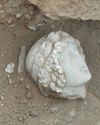
Digs & Discoveries - A Friend For Hercules - Archaeologists discovered a finely carved head depicting Apollo, god of the sun, music, and poetry.
While digging at the crossroads of the two main streets in the ancient city of Philippi in northern Greece, archaeologists discovered a finely carved head depicting Apollo, god of the sun, music, and poetry.
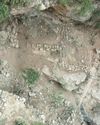
Digs & Discoveries - A Fortress Sanctuary - A sprawling 2,000-year-old fortress in the Zagros Mountains of Iraqi Kurdistan appears to have included a sanctuary dedicated to the ancient Persian water goddess Anahita.
A sprawling 2,000-year-old fortress in the Zagros Mountains of Iraqi Kurdistan appears to have included a sanctuary dedicated to the ancient Persian water goddess Anahita.
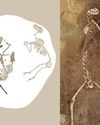
Like Cats And Dogs – Archeologist fund the skeleton of a male Eurasian lynx (Lynx lynx), a notoriously shy creature.
Оn the periphery of Zamárdi, an ancient lakeshore settlement in west-central Hungary, archaeologists uncovered a nearly five-foot-deep beehive-shaped pit with the skeletons of four adult dogs buried in successive shallow layers.
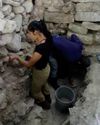
A Dynasty Born In Fire- How an upstart Maya king forged a new social order amid chaos
At the beginning of the Terminal Classic period (ca. A.D. 810-1000), many of the great kingdoms of the southern Maya lowlands-among them Tikal, Palenque, and Calakmul-were being abandoned or collapsing. For many years, scholars have assumed that most, if not all, the other kingdoms across the Maya world must have also been in steep decline.
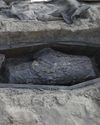
Medical Malfeasance - Archaeologists uncovered two coffins during excavations of a nineteenth-century cemetery in Quebec City that provide evidence of the illicit practice of diverting corpses for the study of human anatomy.
Archaeologists uncovered two coffins during excavations of a nineteenth-century cemetery in Quebec City that provide evidence of the illicit practice of diverting corpses for the study of human anatomy. Starting in 1847, medical students were required to have practical experience studying human anatomy, but legal options to procure cadavers were limited
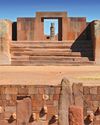
RISE AND FALL OF TIWANAKU
New dating techniques are unraveling the mystery of a sacred Andean city
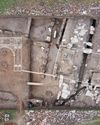
Making a Roman Emperor
A newly discovered monumental arch in Serbia reveals a family's rise to power in the late second century A.D.
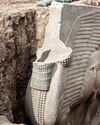
The Assyrian Renaissance
Archaeologists return to Nineveh in northern Iraq, one of the ancient world's grandest imperial capitals

Java's Megalithic Mountain
Across the Indonesian archipelago, people raised immense stones to honor their ancestors
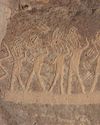
THE SONG IN THE STONE
Located in a desert gorge in southern Peru, Toro Muerto is one of the richest rock art sites in South America. It includes at least 2,600 boulders bearing petroglyphs, many featuring figures known as danzantes who appear to be dancing.